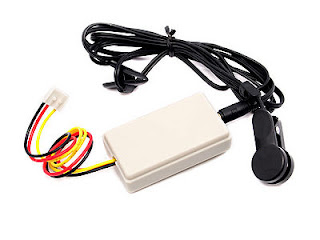Bluetooth Connection in Android from Matt Bell's blog
Project Structure
Here is the java and xml code from Matt Bell's blog adapted to send data only:
[code]--------------------------------------------------------------------------------------
package here
imports here
public class BluetoothTest extends Activity
{
TextView myLabel;
EditText myTextbox;
BluetoothAdapter mBluetoothAdapter;
BluetoothSocket mmSocket;
BluetoothDevice mmDevice;
OutputStream mmOutputStream;
@Override
public void onCreate(Bundle savedInstanceState)
{
super.onCreate(savedInstanceState);
setContentView(R.layout.activity_main); // need a activity_main layout XML file
// with these objects below in it (buttons, labels etc...):
Button openButton = (Button) findViewById(R.id.open);
Button sendButton = (Button) findViewById(R.id.send);
Button closeButton = (Button) findViewById(R.id.close);
myLabel = (TextView) findViewById(R.id.label);
myTextbox = (EditText) findViewById(R.id.entry);
// Open BT connection Button
openButton.setOnClickListener(new View.OnClickListener()
{
public void onClick(View v)
{
try
{
findBT();
openBT();
} catch (IOException ex)
{
}
}
});
// Send Button
sendButton.setOnClickListener(new View.OnClickListener()
{
public void onClick(View v)
{
try
{
sendData();
} catch (IOException ex)
{
}
}
});
// Close button
closeButton.setOnClickListener(new View.OnClickListener()
{
public void onClick(View v)
{
try
{
closeBT();
} catch (IOException ex)
{
}
}
});
}
void findBT()
{
mBluetoothAdapter = BluetoothAdapter.getDefaultAdapter();
if (mBluetoothAdapter == null)
{
myLabel.setText("No bluetooth adapter available");
}
if (!mBluetoothAdapter.isEnabled())
{
Intent enableBluetooth = new Intent(BluetoothAdapter.ACTION_REQUEST_ENABLE);
startActivityForResult(enableBluetooth, 0);
}
Set<BluetoothDevice> pairedDevices = mBluetoothAdapter.getBondedDevices();
if (pairedDevices.size() > 0)
{
for (BluetoothDevice device : pairedDevices)
{
if (device.getName().equals("linvor"))// change accordingly
{
mmDevice = device;
break;
}
}
}
myLabel.setText("Bluetooth Device Found");
}
void openBT() throws IOException
{
UUID uuid = UUID.fromString("00001101-0000-1000-8000-00805f9b34fb");
if (mmDevice != null)
{
mmSocket = mmDevice.createRfcommSocketToServiceRecord(uuid);
mmSocket.connect();
mmOutputStream = mmSocket.getOutputStream();
myLabel.setText("Bluetooth Opened");
}
}
void sendData() throws IOException
{
String msg = myTextbox.getText().toString();
msg += "\n";
mmOutputStream.write(msg.getBytes());
myLabel.setText("Data Sent");
}
void closeBT() throws IOException
{
mmOutputStream.close();
mmSocket.close();
myLabel.setText("Bluetooth Closed");
}
}// end of java code.
XML code:
Manifest
<?xml version="1.0" encoding="utf-8"?>
<manifest xmlns:android="http://schemas.android.com/apk/res/android"
package="your package"
android:versionCode="1"
android:versionName="1.0">
<application android:label="@string/app_name" >
<activity android:name="BluetoothTest"
android:label="@string/app_name">
<intent-filter>
<action android:name="android.intent.action.MAIN" />
<category android:name="android.intent.category.LAUNCHER" />
</intent-filter>
</activity>
</application>
<uses-sdk android:minSdkVersion="5" android:targetSdkVersion="9"/>
<uses-permission android:name="android.permission.BLUETOOTH" />
<supports-screens android:anyDensity="true" />
</manifest>
Layout:
<?xml version="1.0" encoding="utf-8"?>
<RelativeLayout xmlns:android="http://schemas.android.com/apk/res/android"
android:layout_width="fill_parent"
android:layout_height="fill_parent">
<TextView
android:id="@+id/label"
android:layout_width="fill_parent"
android:layout_height="wrap_content"
android:text="Type here:"/>
<EditText
android:id="@+id/entry"
android:layout_width="fill_parent"
android:layout_height="wrap_content"
android:background="@android:drawable/editbox_background"
android:layout_below="@id/label"/>
<Button
android:id="@+id/open"
android:layout_width="wrap_content"
android:layout_height="wrap_content"
android:layout_below="@id/entry"
android:layout_alignParentRight="true"
android:layout_marginLeft="10dip"
android:text="Open" />
<Button
android:id="@+id/send"
android:layout_width="wrap_content"
android:layout_height="wrap_content"
android:layout_toLeftOf="@id/open"
android:layout_alignTop="@id/open"
android:text="Send" />
<Button
android:id="@+id/close"
android:layout_width="wrap_content"
android:layout_height="wrap_content"
android:layout_toLeftOf="@id/send"
android:layout_alignTop="@id/send"
android:text="Close" />
</RelativeLayout>
Arduino Test Code:
#include <SoftwareSerial.h>
int bluetoothTx = 2;
int bluetoothRx = 3;
SoftwareSerial bluetooth(bluetoothTx, bluetoothRx);
const int LED = 10;
char incomingByte = ' ';
void setup()
{
//Setup usb serial connection to computer
Serial.begin(9600);
pinMode(LED, OUTPUT);
//Setup Bluetooth serial connection to android
bluetooth.begin(115200);
bluetooth.print("$$$");
delay(100);
bluetooth.println("U,9600,N");
bluetooth.begin(9600);
Serial.println("Start");
}
void loop()
{
//Read from bluetooth and write to usb serial
if(bluetooth.available())
{
Serial.println("BlueTooth OK");
char toSend = (char)bluetooth.read();
Serial.println(toSend);
incomingByte = toSend;
}
if (incomingByte == 'l')
{
digitalWrite(LED, HIGH);
delay(500);
digitalWrite(LED, LOW);
}
}
[end code]----------------------------------------------




























